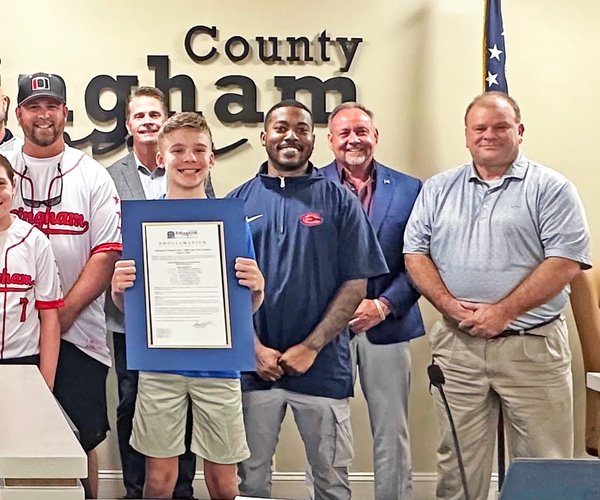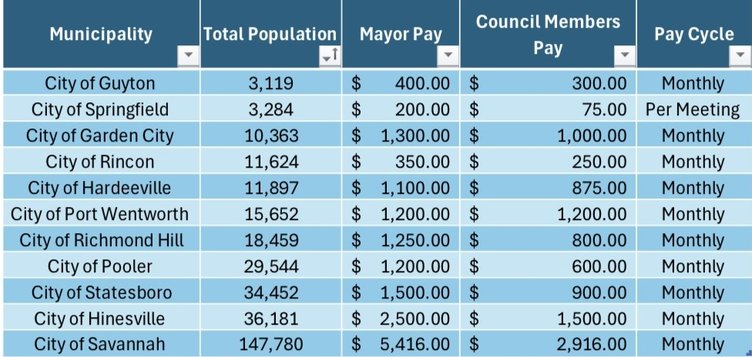Witnesses have said they saw a dark, blue-black liquid bubbled up from the discharge pipe near a local textiles treatment plant Saturday, staining the sediment, banks and waters of the Ogeechee River.
After 33,000 fish died in the Ogeechee River in May, concerned citizens and Ogeechee Riverkeeper Dianna Wedincamp want the discharge, apparently from King America Finishing, stopped.
Wedincamp and a small group of citizens visited the site Saturday after receiving a citizen’s complaint about the plant’s effluent — wastewater containing chemicals and ingredients used in the textiles treatment process — still polluting the river.
What they saw was disturbing, she said.
What’s even more disturbing, Wedincamp said, is that no one from King America Finishing or the Georgia Environmental Protection Division will publicly address the situation.
After the massive fish kill in late May, several area residents filed suit against the plant, whose operations include bleaching and dyeing of fabric. People reported physical ailments following fishing or swimming in the river days after the fish kill began but before the EPD issued warnings. Still, the discharge continues, Wedincamp said.
As she approached the discharge pipe on the Screven County side of the river Saturday, about six miles north of the U.S. 301 North bridge spanning the Ogeechee, she spotted a man at the edge of the river next to the pipe.
Resident’s account
So did Larry Brown, a man who owns land near the plant along the river.
“He was standing on the pipe out in the river,” he said. “I could hear the pumps running. Dianna saw him, too.”
When the unidentified man saw the group approaching, “he ran, jumped in his truck and took off,” Brown said. “The time she got to the pipe, about five or so minutes later, they cut it off. You could hear them turn the pumps off, and the water started slowing down.”
Wedincamp said she saw the man disappear into the woods and leave in a white truck.
“When he saw us he left, and the discharge was coming out pretty good,” she said.
She described the fluid gushing from the pipe as bluish black and more sudsy than other times she has noted the discharge.
“About five to seven minutes later, the flow rate cut in half, but was still oozing into the water,” Wedincamp said.
Wedincamp and Statesboro Herald photographer Scott Bryant took photos and video of the discharge, capturing the flow as it went from gushing to trickling. Bryant also took video of the pipe, which can be seen on statesboroherald.com.
Since the fish kill, which left thousands of fish of several species floating for about 70 miles south of the textiles plant discharge, Wedincamp has visited the site at least five times and noted the murky liquid staining the river.
While the EPD is “actively investigating” the fish kill and possibility that it was caused by King America, EPD officials will not comment on the investigation. They have not accused the plant of being the source of the fish kill,but opened an investigation of the plant shortly after the incident.
Wedincamp and a ranger from the Georgia Department of Natural Resources have both said they traced the source of the fish kill to the discharge pipe. No dead fish were found north of the pipe, she said.
Fish kill
The actual cause of the fish deaths was determined to be columnaris, a bacterial infection caused by “environmental stress.”
Water samples taken by government officials, the Ogeechee Riverkeeper, and private citizens revealed ammonia, sodium hydrochloride (lye), sulfuric acid and more in the water — at unusually high levels.
It’s the acid that worries Brown, along with the dyed water. His family can no longer fish and swim in the river along their property. Not only does he believe the fish found below the discharge pipe — few that there are — are unsafe to eat, but the water is caustic, he said.
“The water is green, and if you wade in it, will break you out in sores,” he said.
He has suffered rashes of sores himself after wading in the river and endured painful burn-like blisters, he said.
Brown is one of many who are part of a class action lawsuit filed in June by the Marietta law firm Hallman and Wingate. The lawsuit takes the EPD and other government agencies to task for several issues, including a delay in closing the river after the fish kill was reported. It also calls for the plant to close, or at least cease dumping effluent into the river.
Many of the dead fish found floating in the river after the May fish kill had sores and red spots, as well as frayed fins, which are symptoms of columnaris. The disease is not known to affect humans.
“There are no snakes, no water snakes” in the river, Brown said.
Other wildlife such as turtles and fish are rarely seen after the kill, he added. The banks of the river, as well as sandbars near the plant, are stained black.
Citizens want answers
Wedincamp said she has sent email messages to EPD spokesman Kevin Chambers, who replied only to tell her “the investigation is ongoing,” she said.
Chambers replied in a similar manner to Statesboro Herald inquiries: “Our investigation is ongoing and I have no new information to release at this time,” he wrote in an email last Wednesday.
King America Finishing CEO Mike Beasley was short Monday when questioned by telephone about the black effluent coming from the plant’s pipe Saturday.
When asked specifically about a man who was seen at the river leaving from the discharge pipe, and the flow stopping minutes later, Beasley said. “Since I wasn’t there, I couldn’t tell you” why the flow stopped and what it contained. “I can’t tell you what it is.”
About the blue-black color of the discharge, he said: “I have been told that happens from time to time.”
When asked to comment on river sandbars being stained and concerns of citizens, the telephone call was disconnected.
Frustrations
Wedincamp said she is not the only one frustrated at the lack of response by the EPD, Environmental Protection Agency, state legislators and King America.
“The frustration comes when you hear about something being done from the EPD and representatives, but no one will explain to the public what is being done,” she said. “Citizens are skeptical of the whole process. The EPD has a huge lack of response and huge communication issue.”
“I don’t like it,” Brown said. “They have ruined our family’s picnic areas, camping and get-togethers. It should be stopped.”
He said a similar problem occurred back in the 1980s when King America was owned by another person and known simply as King Finishing.
The owner at the time corrected the problem, he said.
The investigation by the Ogeechee Riverkeeper and citizens is not going to stop until the problem is solved, Wedincamp said.
“The Ogeechee River should be swimmable and fishable,” she said. “There should be no doubt in the EPD’s mind what the next step should be. They have to communicate with the public and the press. The lack of communication is unacceptable.”
Discharging the darkly colored effluent — which quickly stained a white T-shirt Wedincamp dipped into the water near the discharge pipe — is a violation of the Clean Water Act, she said. “You can’t change the color of the river.”








